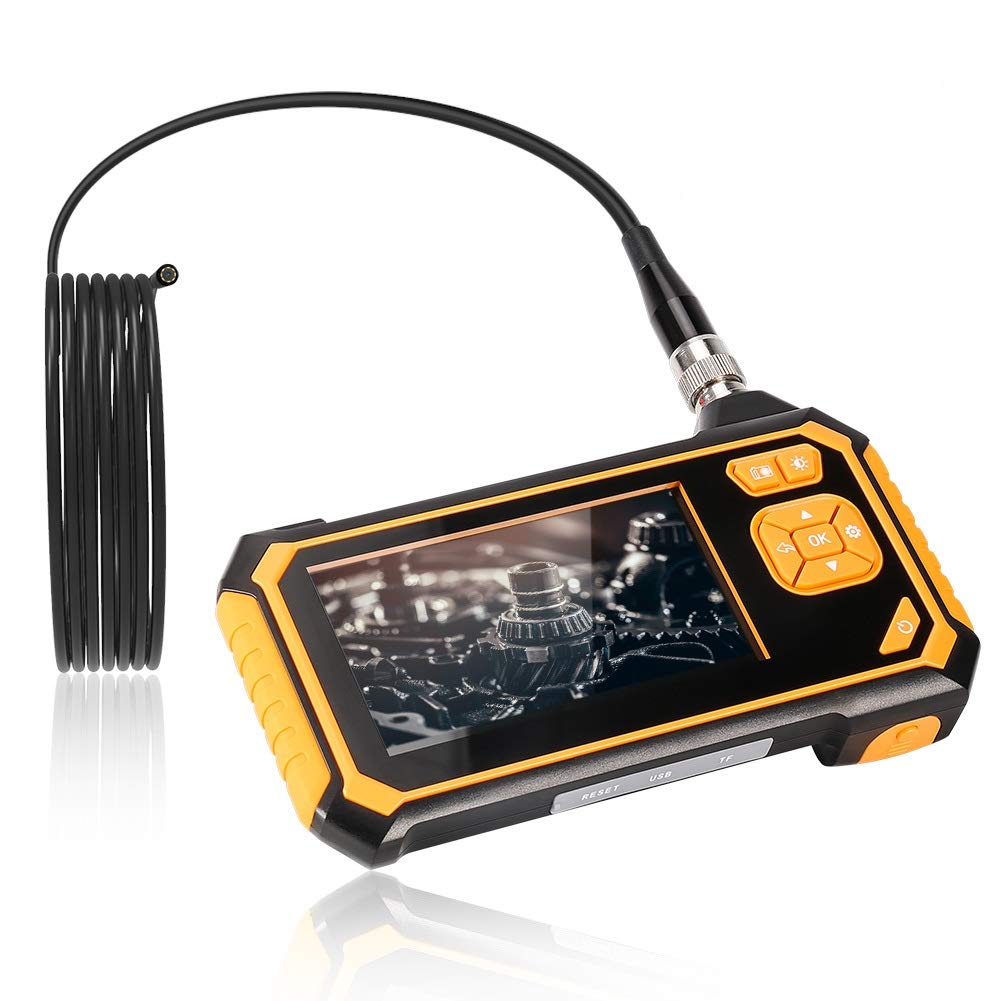
The industrial endoscope is a complex piece of equipment. This high-tech device has been created for the requirements of numerous industries. The convenience offered by its design allows for the multitude of its applications to be even easier to execute.
The design itself is rather simple consisting of a handle, narrow hose, and a high-resolution color monitor. Said monitor comes with the ability to act on found results and can be used for freezing, enlarging, analyzing, measuring, and printing the report on any flaws or malfunctions the user may have detected. Having the ability to immediately utilize results quickly isn’t the only important aspect to industrial endoscope’s recording capabilities, it also comes with both direct and side viewing.
This allows users to scan the pipe wall in a 360 degrees radius. The multitude of directions that are simultaneously recorded reduces work by quite a large margin.
As far as actual uses for an industrial endoscope go the list is very extensive. It can be used for defect detection, condition monitoring, and maintenance of important equipment. Power generation equipment also gets a lot of mileage out of the industrial endoscope. This includes wind power plants, hydroelectric power plants, thermal power plants, and even nuclear power plants.
The application of industrial endoscope envelops a multitude of industries. These industries, while sharing some uses of it, require some specific application of the device as well. It’s impressive how many different fields of use the item has. The most prevalent of these are production, transportation, research, as well as building and operational safety.
Table of Contents
Production
Petroleum industry

img source: energyworld360.com
The utility in this industry hinges on the detection as well as inspection of internal defects in machinery and elements utilized by various facilities. The petroleum industry requires it to assure the security of elements such as storage tanks, heat exchangers, spherical tank trucks in petroleum refineries. Due to the petroleum’s ease of combustion proper inspection of these items is a must to avoid incidents. Proper procedures are to be followed no matter the size of the facility itself, industrial endoscope just cuts down the time necessary for inspection.
Chemical industry
The chemical industry includes any production of industrial chemicals. They utilize raw materials to create more than 70,000 different products. The process of conversion is far from simple, requiring a variety of processes and facilities to be completed. Due to its high amount of variables involved chemical industry also has a big catalog of possible mishaps. Even specialized factories can malfunction if not properly maintained. It is for this reason that we see industrial endoscopes utilized in pipeline facilities. The device can be used for inside inspection of pipes while realizing non-destructive testing on the pipes, without requiring disassembling or assembling of the mechanism.
Pressure vessel industry

img source: tuv.com
Pressure vessels are containers designed to hold liquids, vapors, or gases at high pressures. The pressure these containers achieve is usually above 15 pounds per square inch. Pressure vessels are used in any industry that requires special handling of goods, petroleum and chemical industry being the obvious users of these containers. It could be said that the safety of pressure vessels is key for the safety of other industries as well. The industrial endoscope can be used to inspect steel cylinders, pipelines of special inspection institutes, and pressure vessel production units in the pressure vessel industry.
Power generation
We’ve already mentioned how widely applicable the industrial endoscope is in the power generation industry. No matter which type of energy generation the facility utilizes, the industrial endoscope can be used to secure it. Anything from turbines, pipelines, condenser tubes, pumps, boilers, heat exchangers, valves, and other equipment can be inspected by the industrial endoscope. It helps with keeping things efficient and safe.
Mutual benefits

img source: amazon.com
The device’s image processing system and recorder that comes with the video endoscope allows for effective recording, storage and processing of inspected items at any time to ensure proper archiving as well as accurate readings. The video endoscopy technology broadens the device’s use to an internal inspection of industrial condenser tubes, compressors, heat exchanger tubes, weld inspection, tube wall deposition, corrosion and cracks of stainless pipes used for pharmaceutical products, overheating inspection and leak inspection, as well as annular weld inspection.
Transportation
Railway architecture

img source: cargo.site
Railway systems are complex amalgamations of machinery and accurate human work which allow for enormous loads to be transported without clogging up traffic. Due to its complexity, railway architecture utilizes more than one type of endoscope. The devices used include industrial video endoscopes, pipe endoscopes, and straight rod endoscopes. These models work in conjunction to properly inspect electric locomotives, air conditioning systems, gas turbines, heaters, diesel engines, boiler flames, as well as pipeline inspections. Some of these elements have long fallen out of fashion, such as gas turbines, but still hold their appeal in historical attractions and locations which can’t afford to upgrade their railway system. No matter which fuel it burns locomotive is a vehicle that requires frequent safety checks.
Shipbuilding and ship industry
Similar to railways, ships require their systems to be fully operation for maximum. The ship industry utilizes endoscopes to maintain its pipelines, inspect the engine from malfunctioning, turbine inspection, and proper maintenance of mechanisms. The ability to inspect without disassembly which industrial endoscope maintains keeps these checks fast, effective, and throughout.

img source: adimarships.com
Mutual benefits
The nature of transportation in the current age doesn’t allow for stalling delivery and routes. The key aspect is always speed, this is where the industrial endoscope shines. We’ve already covered all of the available image processing abilities it has, those are no less useful here. While the vehicles will eventually require a full check-up in a specialized setting, minor problems can be uncovered and resolved quickly through this device.
Research
Research Industry
The research industry frequently works with volatile and dangerous substances. For this exact reason, safety is the primary concern. Amount of measures introduced to assure safety keeps increasing by the day. However, these measures can falter. Time, elements, improper setup, or unexpected effects can cause them to become less reliable. In these spaces, industrial endoscope is used to check the corrosion or damage of scientific elements, internal diagnosis of walls, observation, scientific research, laboratories, archaeology, etc.
Construction
Construction industry
The uses here are pretty apparent. Any construction that was done without proper safety risks not only the employees on-site but any future residents who may move into an improperly secured building. For this reason, the industrial endoscope is used to check for corrosion, rust spots, cracks, foreign bodies, and remaining bits of equipment. Even after a building has been made the industrial endoscope maintains its use as the aforementioned issues can appear at any time.
Closing thoughts
After going through all of these categories we can once again reiterate that industrial endoscope’s uses are very broad. There are other fields that also make use of this technology, such as aviation and automotive technology, but we’ve already covered how industrial endoscope is applied in those industries as well. If you have more questions about the application of industrial endoscope or are interested in the device itself there’s more information to be found on https://yateks.com/.








